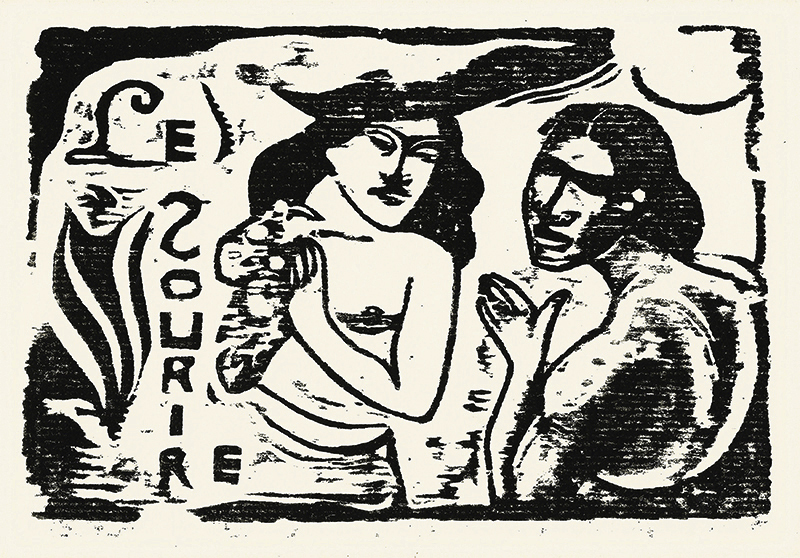
19th, 20th & 21st Century Fine Prints
707-546-7352 · fax 707-546-7924 · web: www.annexgalleries.com · email: artannex@aol.com
Titre pour 'Le Sourire', Number 6, January 1900: (The Smile). by Paul Gauguin

Titre pour 'Le Sourire', Number 6, January 1900: (The Smile).
Paul Gauguin
Titre pour 'Le Sourire', Number 6, January 1900: (The Smile).
Le Sourire (The Smile) was a satirical publication modeled in part off of the more successful Parisian periodical, Le Rire, which was illustrated by artists such as Toulouse Lautrec. Gauguin illustrated his publication with his drawings using a mimeograph, and carved a different woodcut for each header. He said of his process in a letter to Daniel de Monfreid, "I created a newspaper...using the Edison mimeograph, and it's all the rage... Unfortunately, people borrow from each other and I have sold very few copies."
In total nine editions were printed during August 1899 and April 1900 while he lived in the tropics. Exactly how many copies of each were printed is not known, though it was likely fewer than 30. Gauguin was financially strapped and, due to the fact that they were hand printed, the quality of the reproductions was often poor and blotchy; he used cheap glue to bind the leaves to the paper. However, they are admired by art critics and historians today, in part due to their ephemeral nature.
This impression was probably printed in the Czech Republic, possibly in Prague in 1961 by Jánus Kubícek, from a group of 11 woodblocks that Czech artist M.R. Stefánik discovered and bought in Tahiti in 1910 and brought to Paris. These 11 blocks were printed over the years by the Czech government, the last by Kubicek.